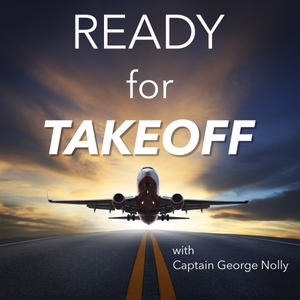
Ready For Takeoff - Turn Your Aviation Passion Into A Career
Captain George Nolly
All episodes
Best episodes
Top 10 Ready For Takeoff - Turn Your Aviation Passion Into A Career Episodes
Goodpods has curated a list of the 10 best Ready For Takeoff - Turn Your Aviation Passion Into A Career episodes, ranked by the number of listens and likes each episode have garnered from our listeners. If you are listening to Ready For Takeoff - Turn Your Aviation Passion Into A Career for the first time, there's no better place to start than with one of these standout episodes. If you are a fan of the show, vote for your favorite Ready For Takeoff - Turn Your Aviation Passion Into A Career episode by adding your comments to the episode page.
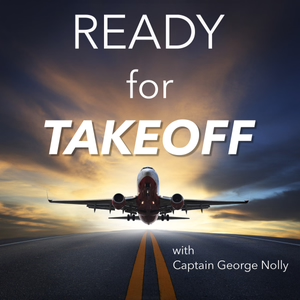
RFT 407: Future Airline Seating
Ready For Takeoff - Turn Your Aviation Passion Into A Career
06/25/20 • 8 min
Will the future of travel be new airline seats spaced out with hygienic barriers, or saddle-style standing seats to cram more passengers on a flight?
Cleaning and social distancing have turned from health necessity to lifestyle trends, and companies are seizing the moment – but not the logic. The latest is conceptual passenger seats for airlines in a post-COVID world. The proposals are different from any economy class offering today.
Janus seat concept from Aviointeriors AVIOINTERIORS
The Janus (above) wants to introduce quasi-isolation by proposing every middle seat face backwards with shields installed between seats. The Glassafe seat (below) proposes installing a transparent plastic hood around each economy seat to limit germ flow.
Glassafe proposal from Aviointeriors AVIOINTERIORS
Don’t expect either seat to be on a plane. They appeal to current impulses but not long-term needs.
These attention-getting concepts are the norm for their designer, Aviointeriors. It’s the same company that proposed the below “SkyRider” saddle-style standing seats, which garnered global attention but not a single sale. There are doubts if regulators will even permit them on an aircraft.
As a smaller vendor, publicity raises awareness for Aviointeriors’ more ordinary seats: slim padding, little legroom, and no head rest or TV screen.
Airlines like Air Niugini and defunct Transaero use seats from Aviointeriors while Alaska Airlines, Lufthansa, Qatar Airways and others select seats from Recaro, which also makes car seats and baby strollers.
The aviation industry jokes that the German manufacturer is so in demand that airlines don’t choose Recaro – Recaro chooses them. Safran is another common supplier.
They skip whimsical concepts for practical developments: lighter but stronger metal alloys, new cushion materials, and better lighting.
Less radical concepts have failed to catch on. Air New Zealand’s “Skycouch” only found one other buyer, China Airlines, which later discontinued it. Delta Air Lines DAL was going to install the “Cozy Suite” on dozens of 767s and 777s, but cancelled the idea. It put the prototype seats up for sale last year.
Even if these new concepts were to be on an aircraft, it surely wouldn’t be before 2022. Aircraft seats have to undergo rigours strength and flammability testing to ensure they can protect passengers in a crash and withstand fire. That testing could raise problems with the seat concepts.
New aircraft seats have to withstand a 16g dynamic force. A roller coaster has forces about 4g and a Formula One car 6g. The plastic barriers have to be strong enough to remain intact, but not so hard they could cause injury if a passenger’s head suddenly crashes into it.
The barriers also add what airlines and seat manufactures always want to reduce: weight. Even a lightweight barrier adds costs when multiplied across hundreds of seats on hundreds of planes.
The barriers could impede an emergency evacuation. Regulators require passengers be able to get out of an aircraft in under 90 seconds in darkness.
There are practical problems. Will oxygen masks be harder to reach in an emergency?
Germs can move over and under barriers. Face masks are arguably more effective.
Aircraft already have better circulation than is commonly thought. Airflow on an aircraft is vertical, reducing the number of people it comes into contact with, unlike a typical air conditioner that blows air horizontally across many people, picking up and moving their germs along the way.
Airlines have a poor track record cleaning the small tray table. Will they sufficiently and regularly clean all of the new surface area the barrier introduces?
The reversed middle seat is supposed to create privacy, but passengers will face each other and there will surely be awkward eye contact, a complaint of British Airways’ former “ying-yang” business class layout.
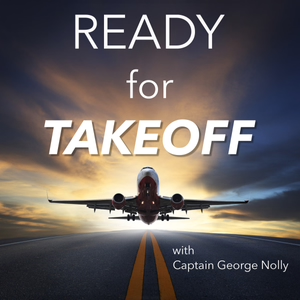
RFT 459: Private Jet Flying
Ready For Takeoff - Turn Your Aviation Passion Into A Career
12/24/20 • 14 min
Furloughs in the airline industry are forcing pilots to find new work in other aspects of aviation, including flying privately-owned aircraft.
Private aviation is in the midst of an expansion that's seeing aircraft operators invest in more planes to bring in a new market of first-time private flyers who are abandoning first class thanks to the pandemic. A fleet of new planes requires more pilots to fly them and as the airlines contract during the downturn, private firms are looking to hire former airline pilots with plenty of experience.
It may seem like an easy transition since flying a plane is the same whether it be for an airliner or private charter company, but the workload and lifestyle couldn't be any more different. Instead of flying a plane full of passengers, a private aviation pilot caters solely to the wealthy and powerful, and that's just the tip of the iceberg.
It's a challenging job that requires a pilot to go above and beyond, at times, according to Sean Scialfa, a 31-year airline pilot who has spent time on both sides of the industry. Unlike the airlines, private aircraft pilots deal with problems head-on and face to face instead of from behind a locked cockpit door and through a public announcement system.
Here's how flying private aircraft is different than flying for the airlines.
1. Wearing many hats Pilots on this side of the industry are very much the face of the operation and frequently interact with guests, which is why private aviation CEOs look for pilots with personality and a customer-service oriented attitude. It's not a job where pilots can show up a few minutes before boarding and not speak to a passenger the entire flight.
When an airline pilot shows up at the airport, the expectation is not to greet passengers in the gate area before a flight, scan their tickets, and load their bags for them. All that is done by the army of support staff that airlines employ to service any given flight.
But those tasks are routinely performed by a private aircraft pilot who typically arrives at the airport about an hour before their flight to prep the aircraft, which can include getting it fueled, stocked, catered, and cleaned. Once the passengers arrive at the plane, it's the pilot's responsibility to cross-check their identification with the manifest, load their bags, and even give the safety briefing if there is no cabin attendant for that flight.
2. The cockpit door is always open Access to the cockpit on a commercial airliner became highly restricted after September 11, 2001. Cockpit doors were reinforced and locked to prevent any undue entry and only opened if the crew needed to use the restroom or receive their meals with no passenger access to the flight deck on most flights.
On the private side, however, the cockpit doors are normally left open. Passengers can see everything that's going on and come visit during the flight. Some private aircraft don't even have cockpit doors with most light and propeller aircraft, namely, having open environments and little to no boundaries between the passenger cabin and cockpit.
The problem isn't the threat of a hijacking with these aircraft but passengers having direct contact with pilots can lead to stressful or pressure-filled situations that could make pilots behave differently. For example, if an aircraft was late to arrive at an airport that is dangerous to access at night, Scialfa said, being pressured by passengers could lead to the pilot to make a fatal mistake by giving in instead of making the safe choice.
3. A different lifestyle, for better or worse The wealthy often go to extremes when they travel and often visit exclusive and exciting locales that may make a pilot's life seem like one long vacation in between flights. Holiday weekends in the winter, for example, can see pilots flying to Aspen, Colorado; Jackson Hole, Wyoming; or Sun Valley, Idaho, then off to Europe or South America for weeks at a time in the summer.
But that lifestyle also means being away from home for long stretches, more so than at the airlines. Pilots working for a charter operation can be on-call or on the road for weeks at a time. Airlines trips are typically only a few days, with periods of time off in between, but private aircraft pilots often have a certain number of weeks on-call followed by hard days off.
According to Scialfa, pilots that can't keep up with that lifestyle will often ask themselves: "Is this better than working in Home Depot, or is it not?"
4. Living local Private aircraft pilots often have to live within a certain radius of their home airport since flights can pop-up at a moment's notice, especially with on-demand charter flights. Some companies require pilots to live less than 90 minutes from the airport to be able to pick up what is known as an "ASAP" trip while some will allow commutes upwards of three hours.
Airline pilot...
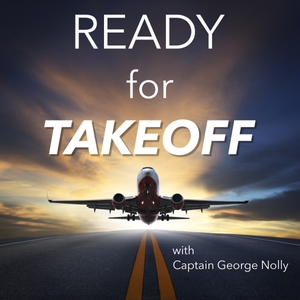
RFT 586: September 11th Retropsective
Ready For Takeoff - Turn Your Aviation Passion Into A Career
09/12/22 • 18 min
The minimum age to obtain an Airline Transport Pilot certificate is 23, which means that it is possible that new airline pilots were as young as two years old when the attacks of September 11, 2001 occurred. The world changed forever on that day, and it's worth looking back at the airline industry before, during and after the attacks.
Although Secretary Rice stated that no one could have foreseen such an attack, in my Doctoral dissertation I documented 13 attempts to fly aircraft into buildings as terrorist attacks prior to the attack on the World Trade Center.
Prior to the attacks, the airline industry had a cavalier attitude toward hijackings. Instructions to pilots were to "comply".
After the attacks, flight crews were operating by the seat of their pants. Until the implementing of fortified cockpit doors, pilots improvised on securing cockpit doors. It was easier for inward-opening doors, but everyone was resourceful.
Finally, fortified doors were installed, but it was clear to everyone that secondary barriers were required, and they still have not been mandated. Ellen Saracini, widow of United Airlines pilot Victor Saracini, has been advocating for secondary barriers for over 20 years.
https://youtu.be/zV3iLanISlw
The Federal Flight Deck Officer Program allowed armed pilots to occupy airline cockpits.
As an interim measure, some pilots were armed with tasers.
In the past nine months, 81 known terrorists have been apprehended at the southern border.
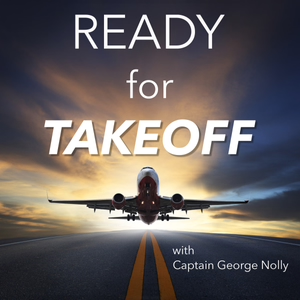
RFT 153: Radiant Crossing Part 2
Ready For Takeoff - Turn Your Aviation Passion Into A Career
01/18/18 • 10 min
November 28, 2013 2346 Greenwich Mean Time West 60 Degrees Flight Level 310
2
It was time to give ATC a call on Guard frequency. We were still over the ocean, but, I estimated, we would be in range of one of the radio facilities on the east coast.
For the previous three hours we had maintained a listening watch on VHF 123.45, and had passed along our information, sparse as it was, to aircraft following us. If this had been a domestic flight, we would have come into contact with aircraft that were headed east, but the NAT tracks only operate in one direction. Flights on the tracks go east at night, usually to arrive in Europe around the time the airport control towers accept arrivals, typically 0600 local time, like Heathrow. Westbound flights operate in the daytime.
From what I could determine, all of the airplanes I had made contact with had exactly the same indications we had, in terms of inoperative equipment. Fortunately, our TCAS was working, since it was dependent only on the operability of onboard equipment. That meant we would be able to visualize nearby aircraft on our TCAS display, and we would all be able to maneuver to avoid midair collisions with other TCAS-equipped aircraft. At these high altitudes, all aircraft were required to have TCAS. It might be a different story altogether when we got lower, as we approached to land,
since light planes didn’t usually have that equipment. But I suspected there wouldn’t be any light planes flying by the time we got to Chicago.
We had a fairly lengthy discussion about exactly where we should land. Given that the meteorological conditions were virtually the same everywhere, arrival weather would likely not be a factor. There was the real potential that, wherever we went, we might not get a gate at the terminal. That would mean remote parking.
The problem with remote parking was that we might not be able to get off the airplane. The 777 sits so high that it takes a special loading bridge or portable stairs to reach up to the aircraft door sill. If we were to divert to an airport that didn’t routinely accept 777s, we could have a problem with our passengers trapped onboard.
That’s what happened when I was flying a trip on September 11, 2001. Like today, weather was crisp and clear all over the United States. When the national aviation emergency was declared, every aircraft was told to land immediately at the nearest airport.
At the time, I had only been a 777 Captain for two years. Two years may sound like a long time, but the 777 is a highly sophisticated airplane, and it takes quite a bit of time for a pilot to fill his bag of tricks on a new airplane. I was flying a domestic trip, from Washington Dulles Airport to Denver International Airport. We were over Kansas when the national emergency was declared. It seemed like a no-brainer to me to continue to Denver, but when the controllers said land immediately, they meant immediately. The closest small blue circle on my cockpit moving map display, denoting a suitable airport, was labeled “KFOE”. From my Boeing 727 days, when I had flown nothing but domestic
trips all over the country, I had remembered that FOE was the VOR identifier for Topeka.
With some great help from my copilot, I had scrambled to program Topeka into our FMC to enable the pressurization system to schedule properly, located the paper approach charts for Topeka that I carried in my “brain bag”, the catalog case that carried all of my documents, and set up for an immediate landing. As I extended the speed brakes and executed an emergency descent, my copilot had made a quick Passenger Address announcement advising everyone on the aircraft that we were making an emergency landing at Topeka.
When we landed at Topeka, the Ground controller advised us that the loading bridges could not accept any aircraft larger than a 727, so we would have to deplane remotely. Then they told us that the only portable stairs they had would be three feet short of our door sill. I still remembered, now eleven years later, how I had stood on the top step of the portable stairs and helped the passengers deplane, one by one. We had three wheelchair passengers that day. It was grim.
I wasn’t going to let that happen again today, if I could help it. The passengers already were aware that something was wrong. About a half hour after the glitch happened, the purser came up to the cockpit.
“Captain, is there something going on that I need to know about? One of our passengers noticed that our airplane symbol isn’t moving on the Airshow moving map display on the passenger video screens. He did a pretty good impression of Scotty from
Star Trek when he said, ‘They have us in a tractor beam.’ Anything wrong besides the Airshow?”
“We’re not sure, Bill. We’ve lost contact with our GPS satellites, and with all ground- based communications faciliti...
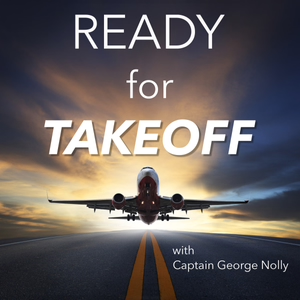
RFT 132: Runway Status Lights
Ready For Takeoff - Turn Your Aviation Passion Into A Career
11/04/17 • 6 min
Concept of Operations
- Runway Status Lights is an essential FAA system which uses Airport Surface Survellance data to determine vehicle and aircraft locations. Runway Status Lights processes this data using complex software algorithms with adjustable parameters to control airfield lights in accordance with Air Traffic operations, including anticipated separation. Red airfield lights (Runway Entrance Lights and Takeoff Hold Lights) illuminate and extinguish as vehicles and aircraft traverse the airfield.
System
- Runway Status Lights integrates airport lighting equipment with approach and surface surveillance systems to provide a visual signal to pilots and vehicle operators indicating that it is unsafe to enter/cross or begin takeoff on runway. The system is fully automated based on inputs from surface and terminal surveillance systems. Airport surveillance sensor inputs are processed through light control logic that commands in-pavement lights to illuminate red when there is traffic on or approaching the runway.
- Runway Entrance Lights (RELs) provide signal to aircraft crossing entering runway from intersecting taxiway
- Takeoff Hold Lights (THLs) provide signal to aircraft in position for takeoff
- Runway Entrance Lights The Runway Entrance Lights system is composed of flush mounted, in-pavement, unidirectional fixtures that are parallel to and focused along the taxiway centerline and directed toward the pilot at the hold line. A specific array of Runway Entrance Lights lights include the first light at the hold line followed by a series of evenly spaced lights to the runway edge; and one additional light at the runway centerline in line with the last two lights before the runway edge (See FIG 2-1-9). When activated, these red lights indicate that there is high speed traffic on the runway or there is an aircraft on final approach within the activation area.
- Operating Characteristics – Departing Aircraft: When a departing aircraft reaches 30 knots, all taxiway intersections with Runway Entrance Lights arrays along the runway ahead of the aircraft will illuminate (see FIG 2-1-9). As the aircraft approaches a Runway Entrance Lights equipped taxiway intersection, the lights at that intersection extinguish approximately 2 to 3 seconds before the aircraft reaches it. This allows controllers to apply "anticipated separation" to permit Air Traffic Control to move traffic more expeditiously without compromising safety. After the aircraft is declared "airborne" by the system, all lights will extinguish.
- Operating Characteristics – Arriving Aircraft: When an aircraft on final approach is approximately 1 mile from the runway threshold all sets of Runway Entrance Light arrays along the runway will illuminate. The distance is adjustable and can be configured for specific operations at particular airports. Lights extinguish at each equipped taxiway intersection approximately 2 to 3 seconds before the aircraft reaches it to apply anticipated separation until the aircraft has slowed to approximately 80 knots (site adjustable parameter). Below 80 knots, all arrays that are not within 30 seconds of the aircraft's forward path are extinguished. Once the arriving aircraft slows to approximately 34 knots (site adjustable parameter), it is declared to be in a taxi state, and all lights extinguish.
- What a pilot would observe: A pilot at or approaching the hold line to a runway will observe Runway Entrance Lights illuminating and extinguishing in reaction to an aircraft or vehicle operating on the runway, or an arriving aircraft operating less than 1 mile from the runway threshold.
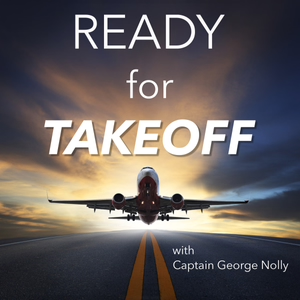
RFT 069: Combat Pilot/Author Mark Berent
Ready For Takeoff - Turn Your Aviation Passion Into A Career
02/27/17 • 41 min
Mark Berent received his pilot’s wings in September 1953, then flew the F-86 SabreJet and the F-100 Super Sabre in Germany, France, and the U.S. He even caught a ride in the "missile with a man in it", the F-104. In the early ‘60s, the USAF sent him to Arizona State University to get an engineering degree. While there, the Vietnam War became more intense, and he volunteered for duty in Vietnam
In mid-December 1965 he arrived at Bien Hoa Air Base in South Vietnam as a pilot in the 531st Tactical Fighter Squadron (TFS) in the 3rd Tactical Fighter Wing (TFW). He flew over 250 missions and was reassigned back in the States to a desk job at the Space and Missile Systems Organization (SAMSO) in El Segundo, California. Though he was able to fly the T-39 Sabreliner, he was not happy. The war tempo had increased. He made contact with Air Force Personnel and soon found himself at George Air Force Base, Victorville, California, upgrading into the F-4 Phantom.
On the 1st of November, 1968, he signed in to the 497th TFS at Ubon Royal Thai Air Force Base in upcountry Thailand. There he flew over 240 missions both as a Night Owl and as a Wolf Forward Air Controller (FAC).
He wrote the Wings of War series, a five-part series that follows pilot Court Bannister, pilot Toby Parker, and Special Forces officer Wolf Lochert through their successive combat tours in Vietnam. Along the way, we see real events like Johnson and McNamara micro-managing the war, the outrageous abuse of American Pilots held at the Hoa Lo prison, and the claim of an attack on the Russian ship Turkmenestan.
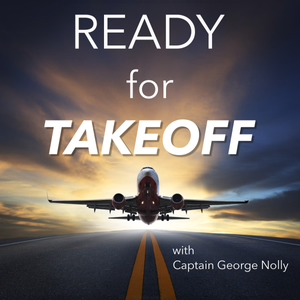
RFT 593: Steven Myers
Ready For Takeoff - Turn Your Aviation Passion Into A Career
12/23/22 • 49 min
The cornerstone of courage is optimism.
In 1992, at the end of the Cold War, Steven Myers became the first American since Charles Lindbergh in 1931, to pilot an aircraft into the Russian Kamchatka peninsula. There he formed one of the first post-Soviet era joint ventures - a pioneering, expansive, business enterprise with the potential to transform the lives of the people of the Russian Far East.
Steve's remarkable true story recounts the dramatic adventure, courageous entrepreneurship, and intrigue in the creation of a breakthrough business in a remote corner of the world, a wonderous place few people have been to or know anything about.
The underlying theme of the story is the clash of two vastly different cultures: Americans, with go-for-broke, entrepreneurial “can do” attitudes, and Russians with a long, painful history of constraining rules, risk aversion, and fear.
After years of hard work, just as the enterprise is about to achieve breakthrough success, an unexpected warning by US government agents alerts Myers that his life is in danger if he continues with his business activities in Russia. How he reacts, and what he does next, provides a gripping, dramatic climax to the story.
A timeless exploration of human conflict, determination, and power, this audiobook will inspire adventurers, aviators, entrepreneurs, business leaders, politicians, and diplomats to push past their fears and take command of their dreams. After all, “the cornerstone of courage is optimism”.
Steve's website is www.stevenmyers.com.
His article describes being the oldest Captain upgrade paired with the youngest First Officer on the B777.
An article Steve recently wrote for Fear of Landing.
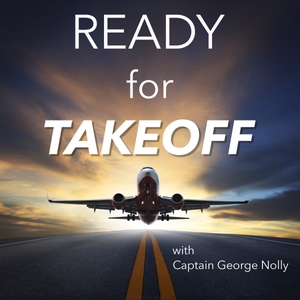
RFT 347: A Sad Anniversary
Ready For Takeoff - Turn Your Aviation Passion Into A Career
11/28/19 • 6 min
TWA 514 crashed into terrain while attempting to land at Washington Dulles International Airport. from Wikipedia:
"The flight was being vectored for a non-precision instrument approach to runway 12 at Dulles. Air traffic controllers cleared the flight down to 7,000 feet (2,130 m) before clearing them for the approach while not on a published segment.
The jetliner began a descent to 1,800 feet (550 m), shown on the first checkpoint for the published approach. The cockpit voice recorder later indicated there was some confusion in the cockpit over whether they were still under a radar-controlled approach segment which would allow them to descend safely. After reaching 1,800 feet (550 m) there were some 100-to-200-foot (30 to 60 m) altitude deviations which the flight crew discussed as encountering heavy downdrafts and reduced visibility in snow.
The plane impacted the west slope of Mount Weather at 1,670 feet (510 m) above sea level at approximately 230 knots (265 mph; 425 km/h). The wreckage was contained within an area about 900 by 200 feet (275 by 60 m). The evidence of first impact were trees sheared off about 70 feet (20 m) above the ground; the elevation at the base of the trees was 1,650 feet (505 m).
The wreckage path was oriented along a line 118 degrees magnetic. Calculations indicated that the left wing went down about six degrees as the aircraft passed through the trees and the aircraft was descending at an angle of about one degree. After about five hundred feet (150 m) of travel through the trees, it struck a rock outcropping at an elevation of about 1,675 feet (510 m). Numerous heavy components of the aircraft were thrown forward of the outcropping, and numerous intense post-impact fires broke out which were later extinguished. The mountain's summit is at 1,754 feet (535 m) above sea level."
As a result of this accident, air traffic controllers now assign an altitude to fly until intercepting a segment of a published approach.
Northwest 6231 crashed after encountering an aerodynamic stall. From Wikipedia:
"The flight was chartered to pick up the Baltimore Colts in Buffalo after the aircraft originally earmarked to transport the team was grounded by a snowstorm in Detroit.
The Boeing 727-251, registration N274US, departed New York City's John F. Kennedy International Airport at 19:14 for a ferry flight to Buffalo. As the craft climbed past 16,000 feet (4,900 m), the overspeed warning horn sounded, followed 10 seconds later by a stick shaker stall warning. The aircraft leveled at 24,800 feet (7,600 m) until it started to descend out of control in a spin, reaching a vertical acceleration of +5g. At about 3,500 feet (1,100 m), a large portion of the aircraft's horizontal stabilizer separated due to the high G-forces, making recovery impossible. Flight 6231 struck the ground in a slightly nose down and right wing-down attitude twelve minutes after take-off, at 19:26."
The accident board determined that the pitot heat had been inadvertently turned OFF prior to takeoff, and as the aircraft climbed through clouds the pitot tubes froze, causing altimeter effect on the airspeed indicator, in which an increase in altitude will cause indicated airspeed to increase.
On many aircraft today, the pitot heat will automatically be turned ON when the aircraft is airborne.
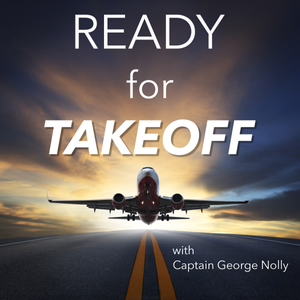
RFT 402: F-117A Pilot Chandra Beckman
Ready For Takeoff - Turn Your Aviation Passion Into A Career
06/08/20 • 23 min
Having the desire to fly fighter jets since seeing the movie “Top Gun,” Chandra Beckman became part of the elite group of women who have flown United States Air Force fighter jets.
Chandra started her AF career in ROTC in 1993, the same year the Department of Defense lifted the ban on women flying combat missions, which opened the door for women to fly fighter jets. She graduated with a Bachelor’s Degree in Mathematics from Arizona State University in 1998. After a delay due to an unexpected pregnancy, she attended USAF Pilot Training where she earned an assignment to fly the F-15C Eagle, and was the first woman to fly that aircraft as a mother. During her time flying the F-15C, Chandra supported the defense of the homeland through Operation NOBLE EAGLE and flew combat missions during the opening weeks of Operation IRAQI FREEDOM.
Following three years flying the F-15C, she was one of only 3 women assigned to fly the first stealth fighter aircraft, the F-117A Nighthawk. During her time flying that aircraft, she deployed in support of security operations to the Korean peninsula, coordinated with media groups to showcase the final F-117 RED FLAG, and mentored school children and Airmen of all ranks.
Taking a break from flying, Chandra was stationed in the Republic of Korea where she was assigned to the Combined Air Operations Center. While there she developed and implemented the first Operations Center training program for new personnel and worked jobs in both offensive and defensive combat training roles. Chandra then went on to be an Instructor Pilot at the Euro-NATO Joint Jet Pilot Training Program. However, health challenges that had begun while she was stationed in the Republic of Korea finally grounded her from flying.
From 2009-2017, she earned a Master’s Degree in Aeronautical Science and held multiple jobs which included: Director of Staff for the 82 Training Wing, an organization with a permanent staff of over 3,000 people worldwide serving a student population of almost 80,000 annually; and Director of Operations for RED FLAG, the organization responsible for establishing the framework to train US and coalition nation members in the world’s most realistic air combat scenarios.
Retired from active duty, Chandra enjoys having the freedom to travel the world with her husband and be available for her children whenever and wherever they need her to be. She is a member of the Veteran Advisory Team for the National Foundation for Integrative Medicine and looks forward to helping others in that capacity.
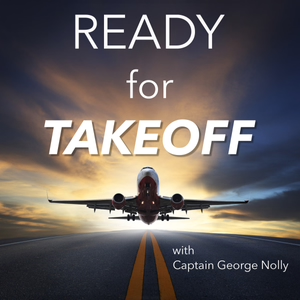
RFT 471: Airliner Hit By MANPAD!
Ready For Takeoff - Turn Your Aviation Passion Into A Career
02/04/21 • 8 min
On 22 November 2003, shortly after takeoff from Baghdad, Iraq, an Airbus A300B4-200F cargo plane, registered OO-DLL and owned by European Air Transport (doing business as DHL Express), was struck on the left wing by a surface-to-air missile while on a scheduled flight to Muharraq, Bahrain. Severe wing damage resulted in a fire and complete loss of hydraulic flight control systems. Because outboard left wing fuel tank 1A was full at takeoff, there was no fuel-air vapor explosion. Liquid jet fuel dropped away as 1A disintegrated. Inboard fuel tank 1 was pierced and leaking.
Returning to Baghdad, the three-man crew made an injury-free landing of the seriously damaged A300, using differential engine thrust as the only pilot input. This is despite major damage to a wing, total loss of hydraulic control, a faster than safe landing speed and a ground path which veered off the runway surface and onto unprepared ground.
Paris Match reporter Claudine Vernier-Palliez accompanied a Fedayeen unit on their strike mission against the DHL aircraft.
Sara Daniel, a French weekly newsmagazine journalist, claimed receipt, from an unknown source, of a video that showed insurgents, faces concealed, firing a missile at the DHL A300. Daniel was researching a feature about Iraqi resistance groups but she denied any specific knowledge of the people who carried out the attack, despite being present at the moment of attack.
The aircraft took off from Baghdad International Airport en route to Bahrain International Airport at 06:30 UTC with an experienced crew of three: two Belgians, 38-year-old Captain Éric Gennotte and 29-year-old First Officer Steeve Michielsen, and a Scotsman, 54-year-old flight engineer Mario Rofail. The captain had 3,300 total flight hours, more than half of them logged in the A300. The first officer had 1,275 hours of flight experience and the flight engineer had 13,400 hours of flight experience.
To reduce exposure to ground attack, the aircraft was executing a rapid climbout. At about 8,000 feet (2,450 metres), a 9K34 Strela-3 (SA-14 Gremlin) surface-to-air missile struck the rear of the left wing between the engine and the wing tip. The warhead damaged trailing-edge surfaces of the wing structure and caused a fire. All three hydraulic systems lost pressure, and flight controls were disabled. The aircraft pitched rapidly up and down in a roller-coaster phugoid, oscillating between a nose-up and a nose-down position.
As in the case of the 1989 United Airlines Flight 232 disaster in the United States, Captain Genotte could only use thrust to modify pitch, speed and altitude and vary throttles asymmetrically to control yaw and turn the aircraft. Flight engineer Mario Rofail executed a gravity drop to extend the landing gear, a procedure normally accomplished with hydraulic power. Early deployment of the gear was critical to a safe outcome because increased drag helped reduce speed and stabilize the aircraft.
In about 10 minutes of experimentation, the crew learned to manage turns, climbs and descents. After a meandering trajectory, they executed a right turn and initiated a descent path to Baghdad International Airport.
Because of left wing damage and fuel loss, Rofail had to monitor the engine closely – if fuel flow was lost from the left side, he would have to feed fuel from a right tank to maintain thrust. Survival was dependent on accurate power control of each jet engine.
Genotte and Michielsen set up for a final approach to runway 33R. The aircraft drifted to the right of the intended course, so Genotte chose the shorter 33L runway. Visibility was excellent and the pilots managed a controlled descent. They knew that, counter-intuitively, they could not retard throttles before touchdown without risking the nose or a wing smashing disastrously into the ground.
At about 400 feet (120 meters) turbulence upset the aircraft balance and the right wing dipped. With thrust adjustments, the roll was controlled but the aircraft touched down off the runway centerline. Rofail immediately deployed full reverse thrust but the aircraft veered off the paved runway. The aircraft ran through rough soft ground, throwing up a plume of sand and dragging a razor wire barrier, and halted after about 1,000 meters (3,300 ft).
The Honourable Company of Air Pilots jointly honoured crewmembers with the Hugh Gordon-Burge Memorial Award. This is awarded to flight crew whose action contributed outstandingly by saving their aircraft or passengers, or made a significant contribution to future air safety. This annual award is made only if a nomination is considered to be of significant merit.
The Flight Safety Foundation's FSF Professionalism Award in Flight Safety was presented to the crewmembers for their "extraordinary piloting skills in flying their aircraft to a safe landing after a missile strike following takeoff from ...
Show more best episodes

Show more best episodes
FAQ
How many episodes does Ready For Takeoff - Turn Your Aviation Passion Into A Career have?
Ready For Takeoff - Turn Your Aviation Passion Into A Career currently has 610 episodes available.
What topics does Ready For Takeoff - Turn Your Aviation Passion Into A Career cover?
The podcast is about Flying, Leisure, Pilot, Aviation, Airline, Podcasts, Business and Careers.
What is the most popular episode on Ready For Takeoff - Turn Your Aviation Passion Into A Career?
The episode title 'RFT 409: In Praise of Pilot Spouses' is the most popular.
What is the average episode length on Ready For Takeoff - Turn Your Aviation Passion Into A Career?
The average episode length on Ready For Takeoff - Turn Your Aviation Passion Into A Career is 25 minutes.
How often are episodes of Ready For Takeoff - Turn Your Aviation Passion Into A Career released?
Episodes of Ready For Takeoff - Turn Your Aviation Passion Into A Career are typically released every 3 days, 21 hours.
When was the first episode of Ready For Takeoff - Turn Your Aviation Passion Into A Career?
The first episode of Ready For Takeoff - Turn Your Aviation Passion Into A Career was released on Dec 28, 2015.
Show more FAQ

Show more FAQ